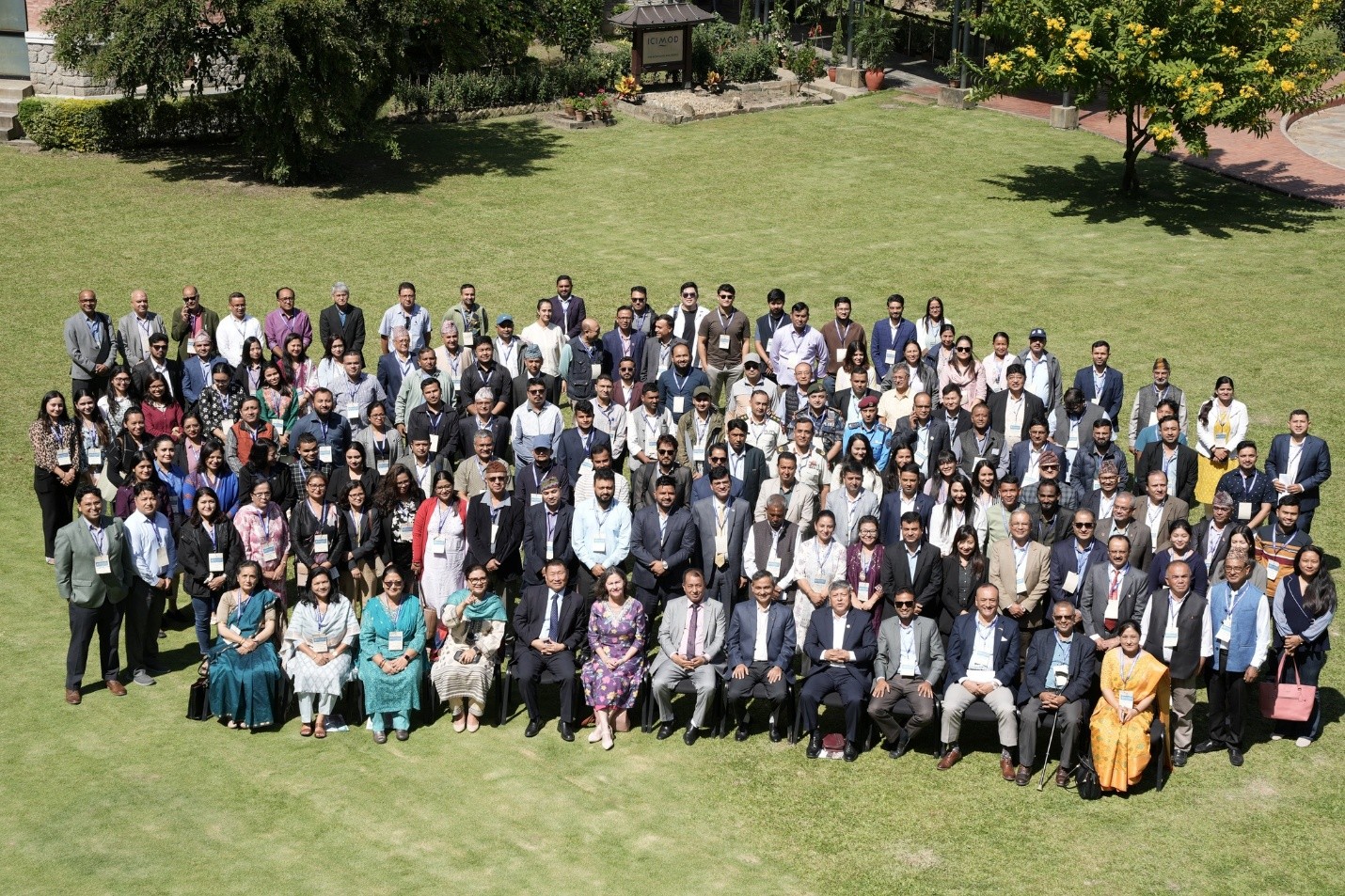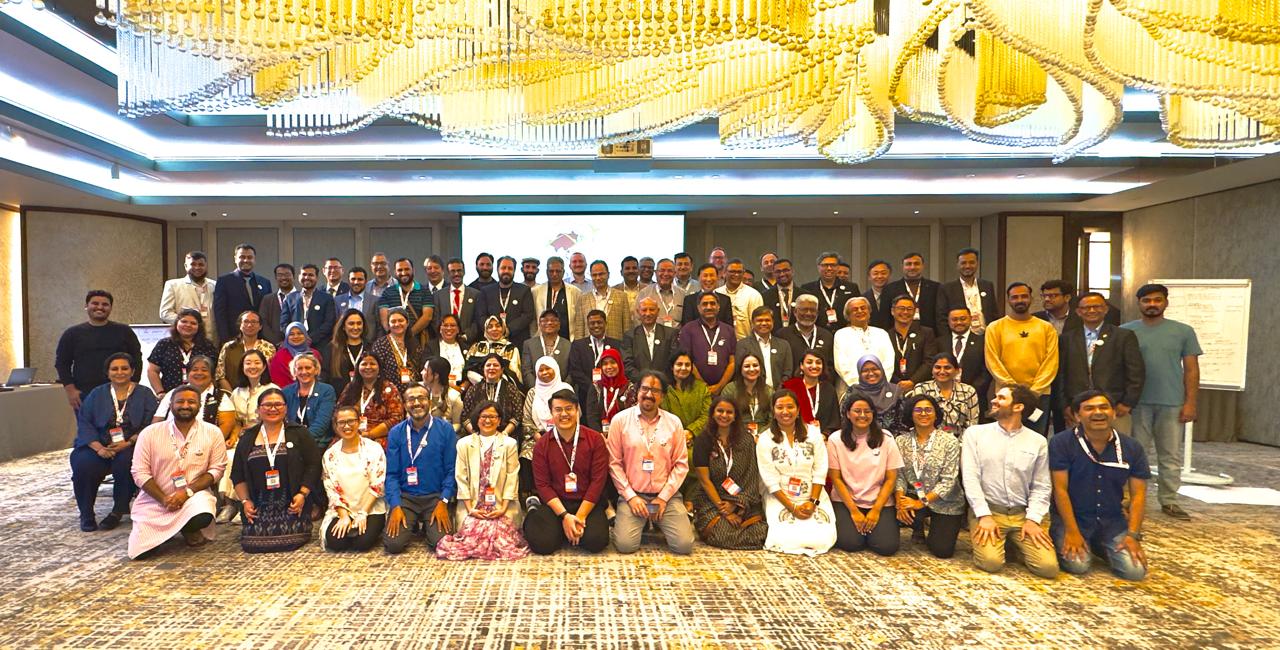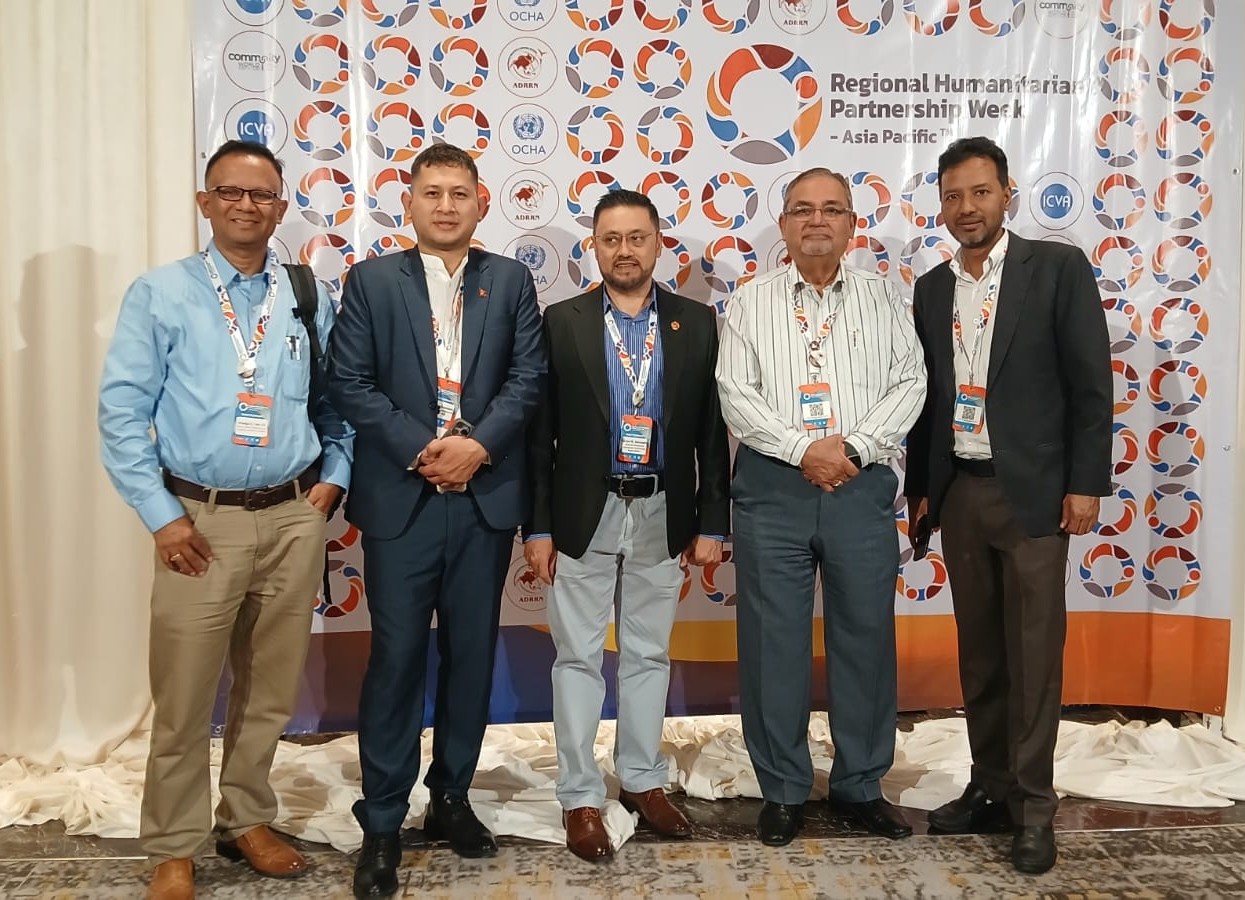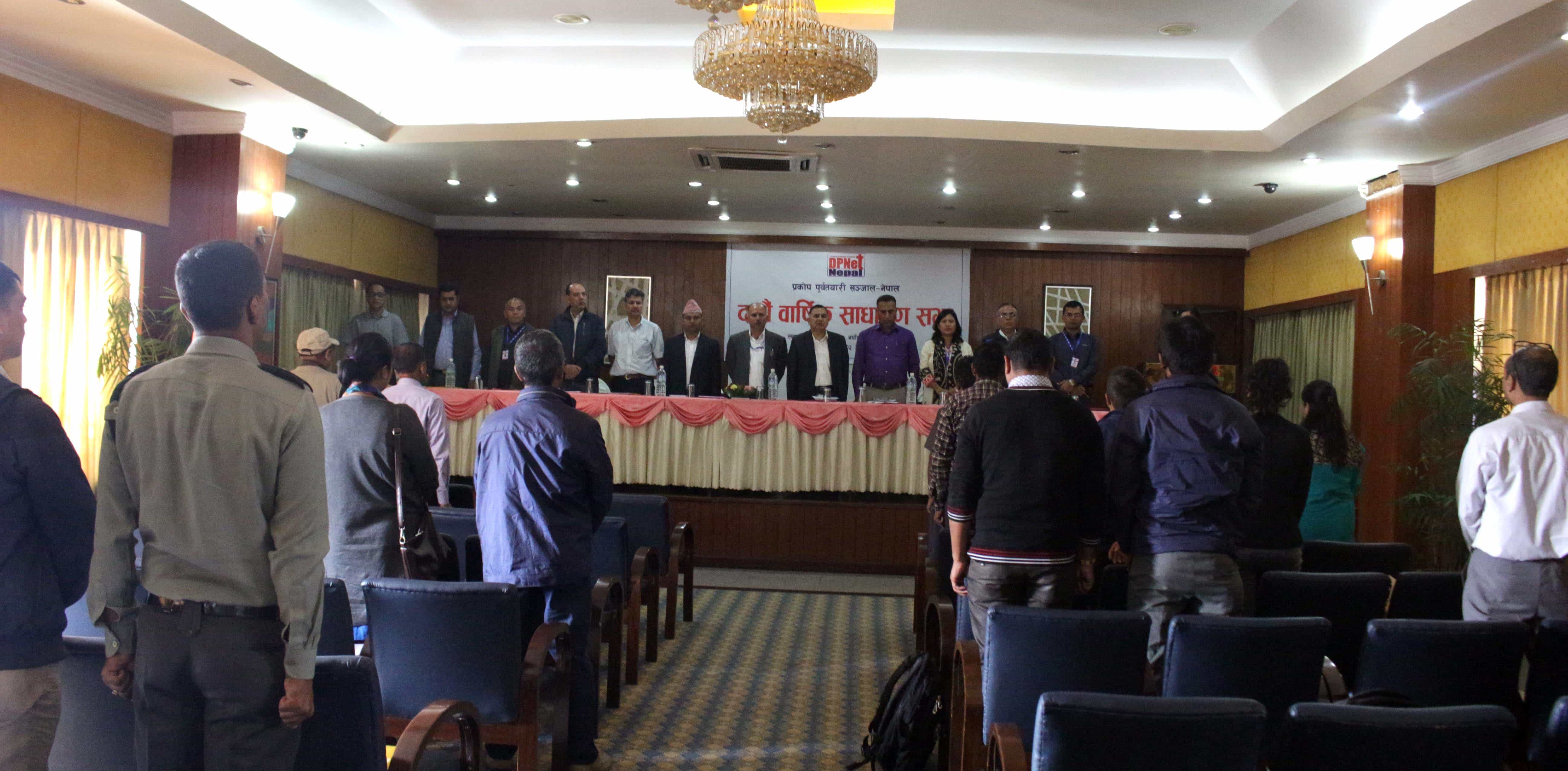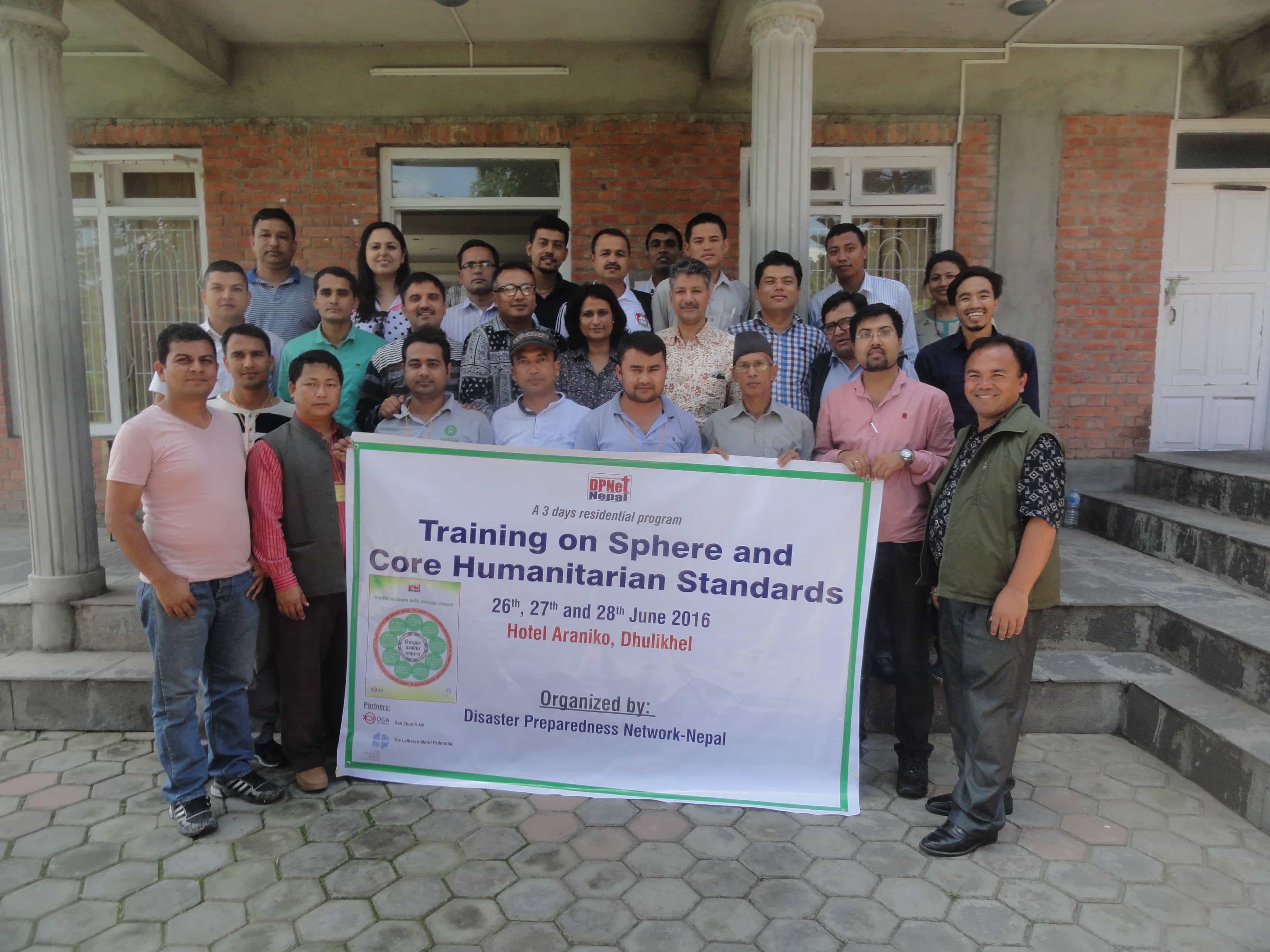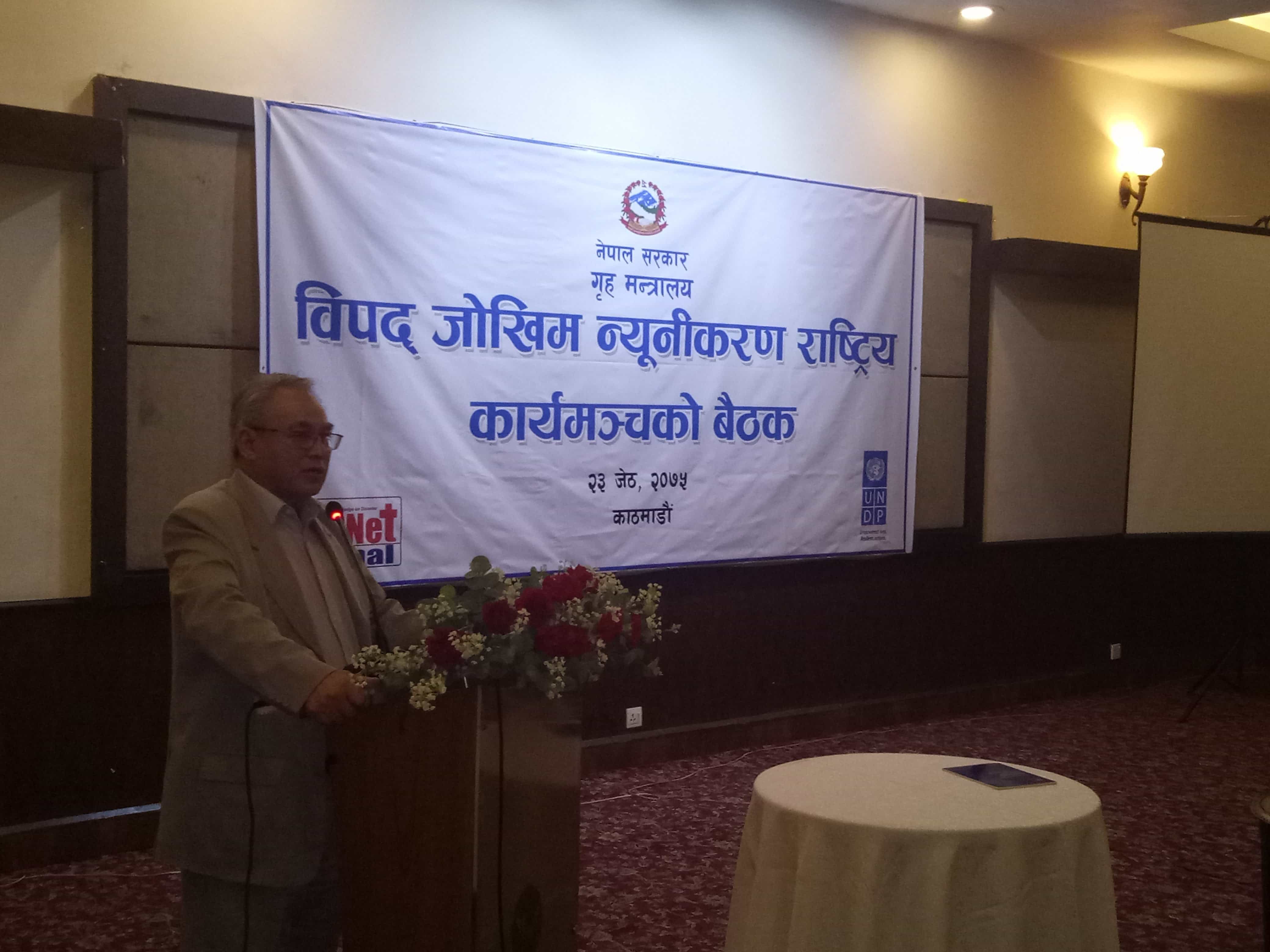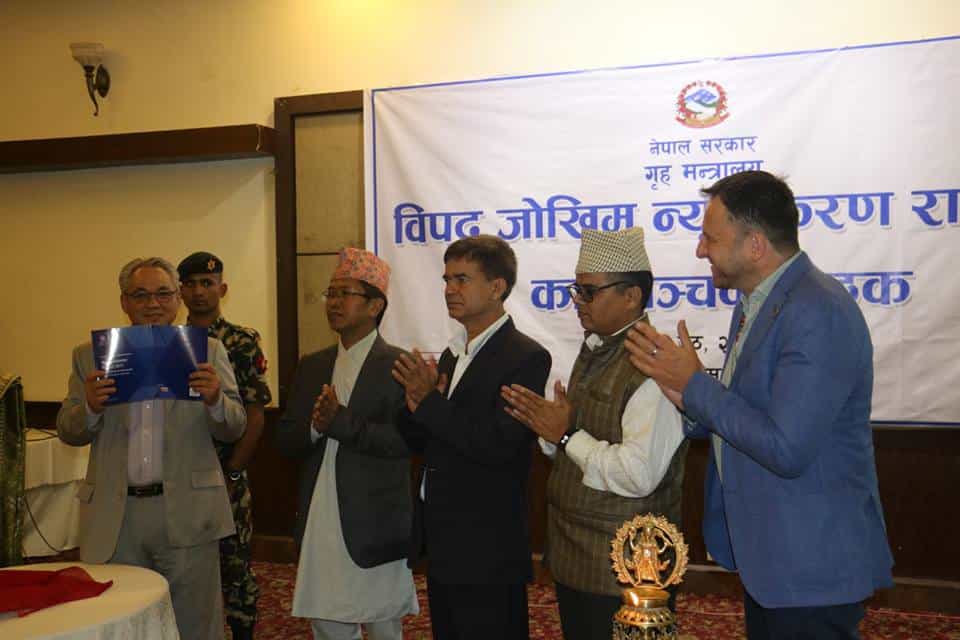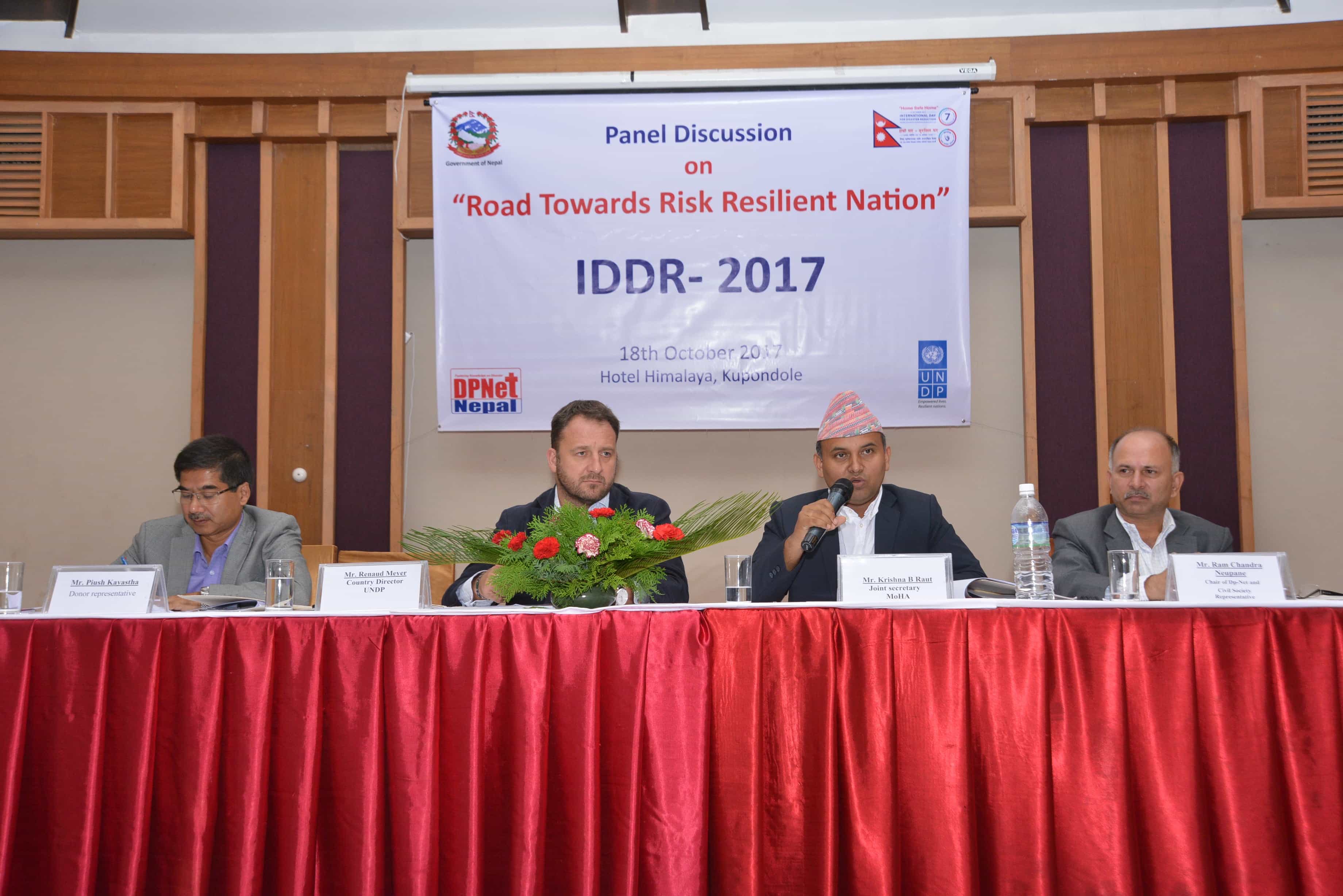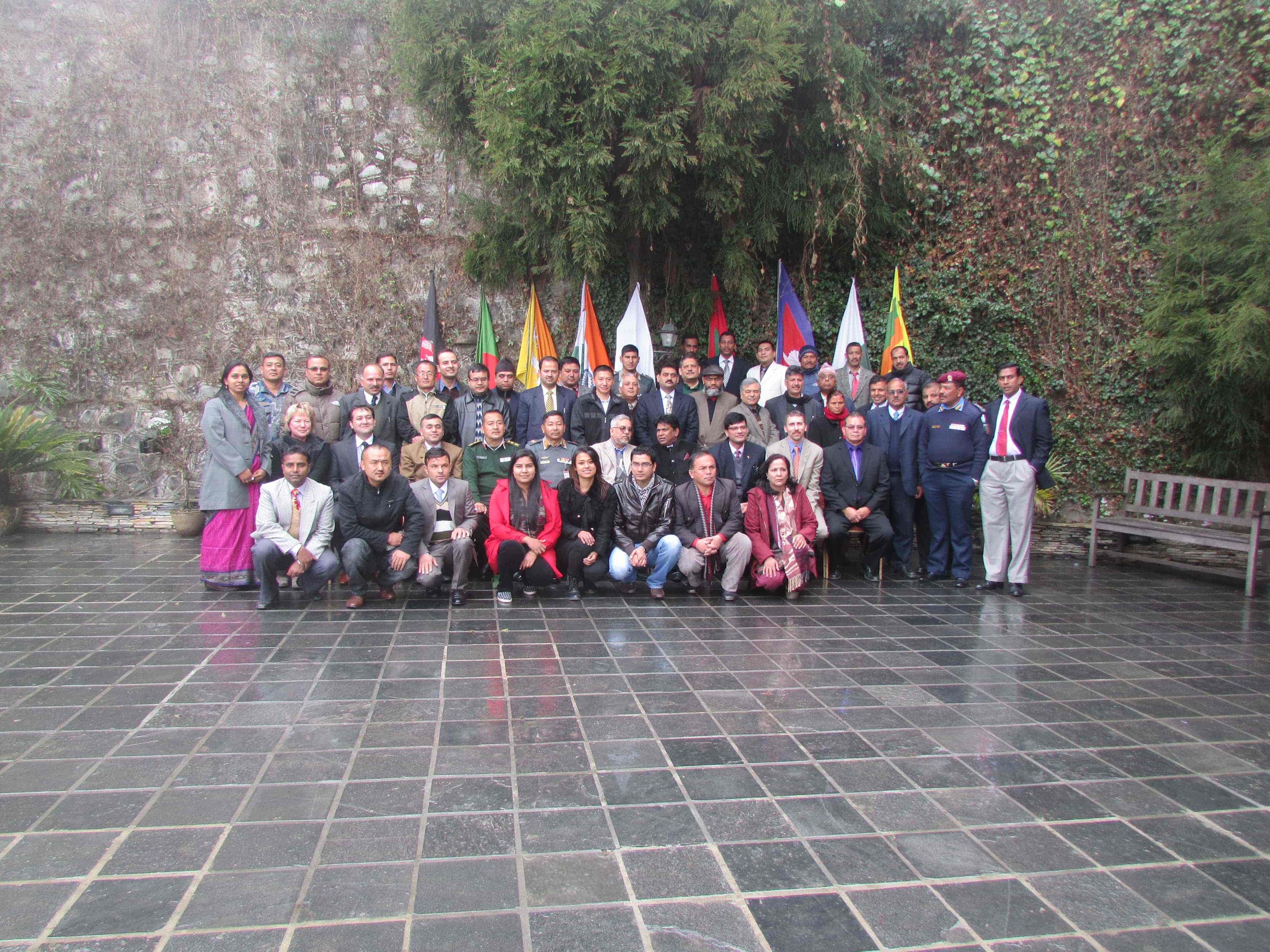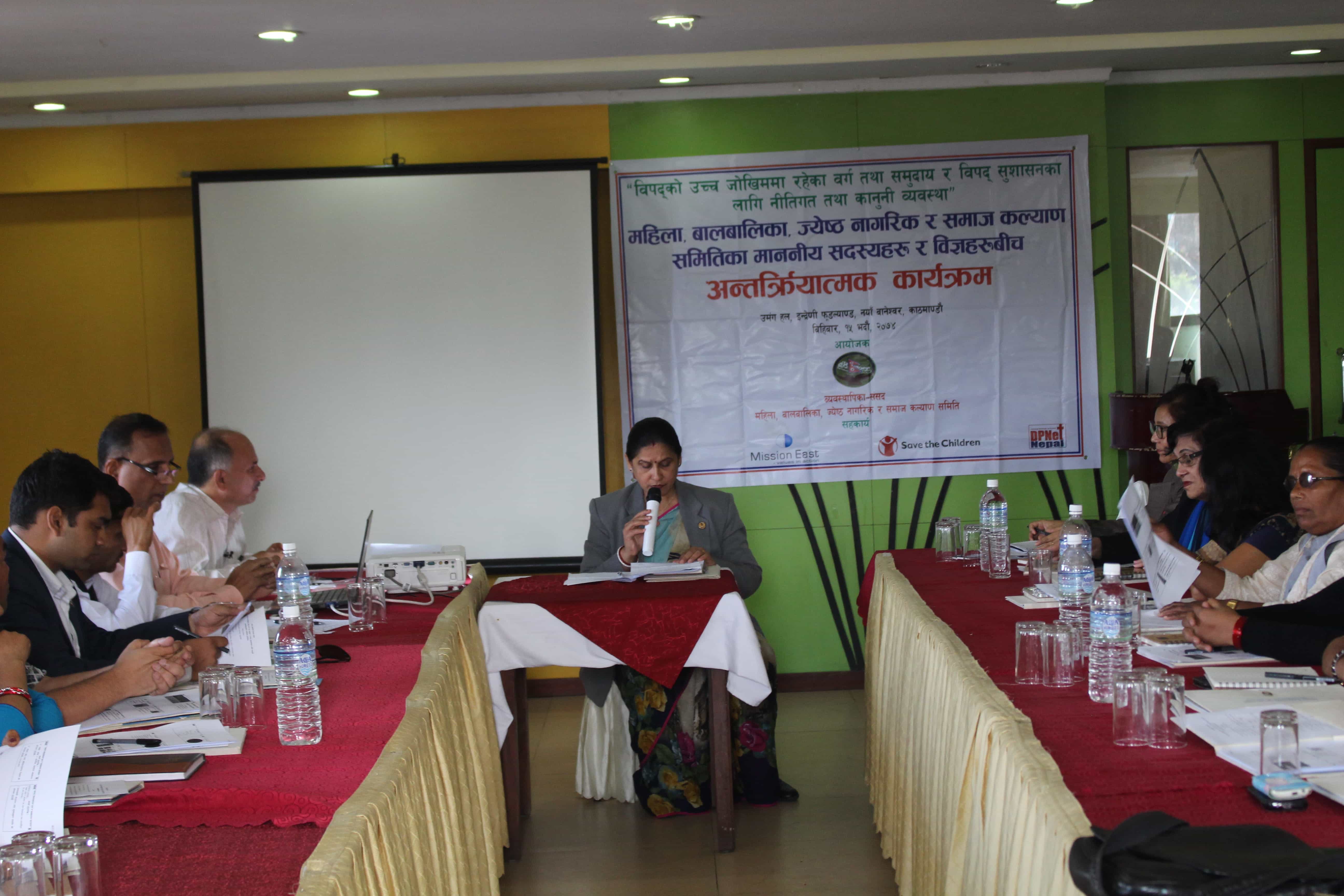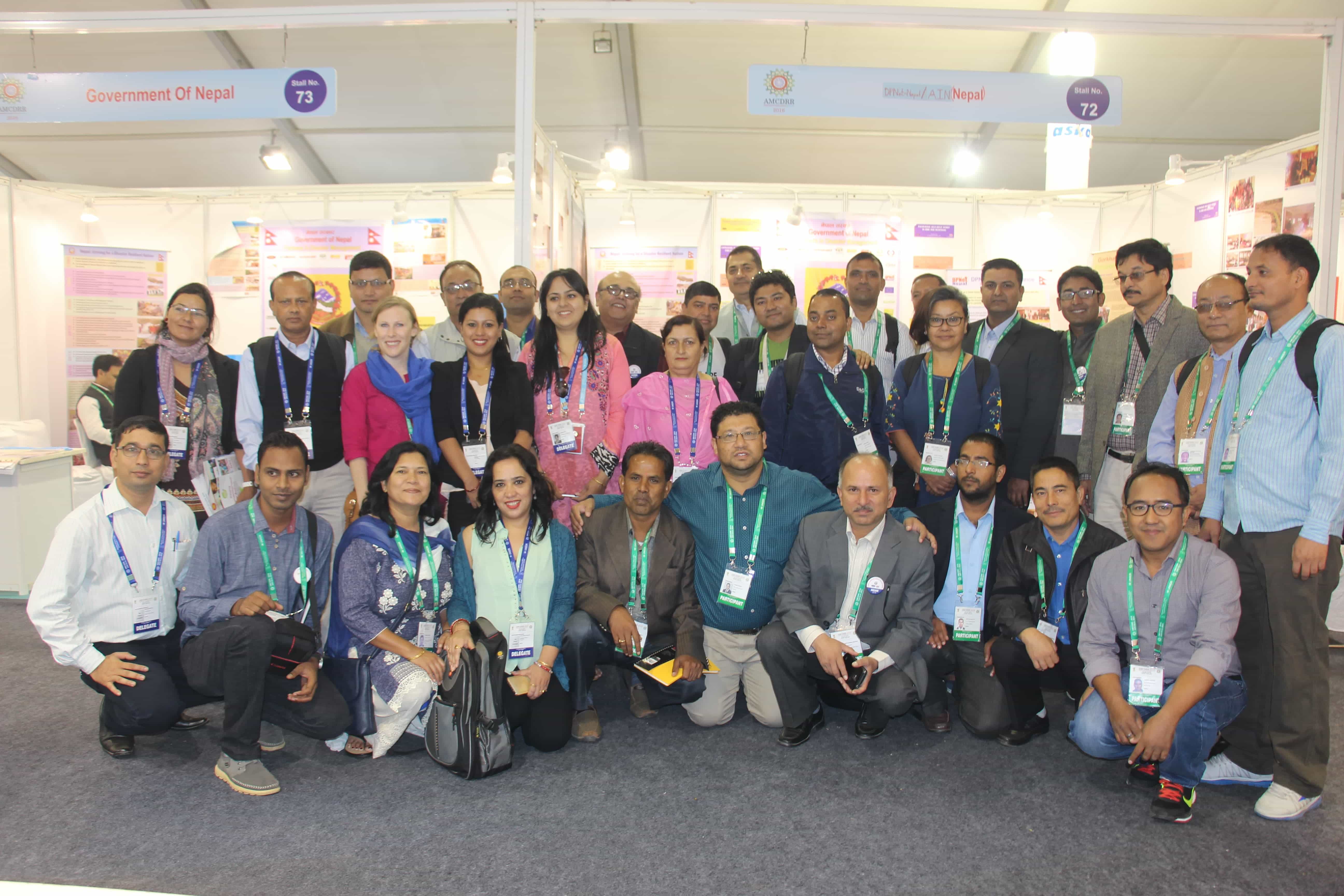DPNet Discussion on the Jajarkot Earthquake
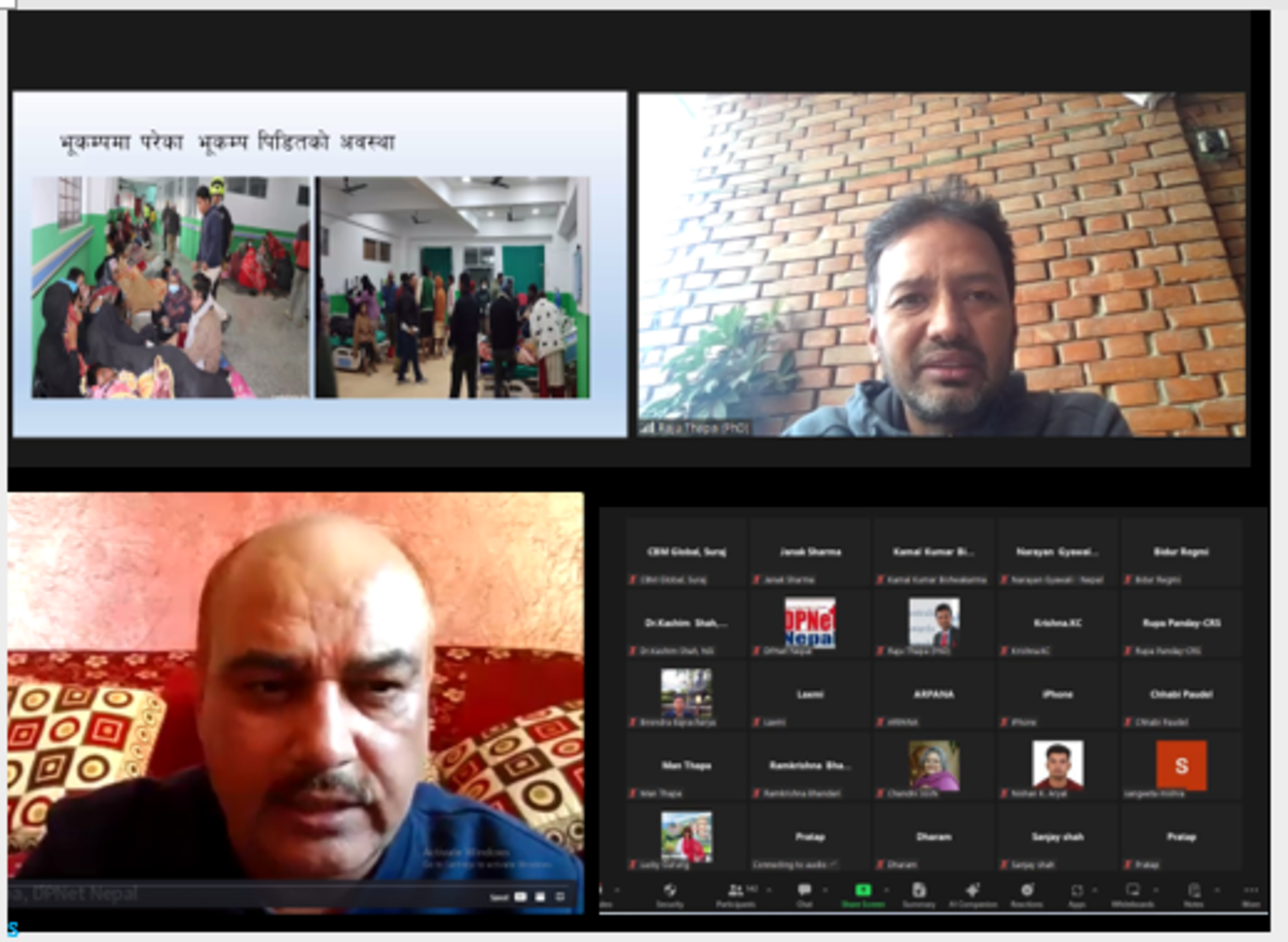
On November 4, DPNet organized a virtual discussion in response to the earthquake in Jajarkot, which occurred on November 3, 2023. The meeting was a significant gathering, with over 150 stakeholders participating and sharing their insights. The primary focus of the discussion was to strategize the immediate actions required in the wake of the disaster and to ensure an effective and coordinated response. The meeting has been decided that DPNet will take the lead in gathering information to compile a daily situation report, which will serve to minimize the duplication of efforts among the involved parties. Additionally, there is an immediate need for the mobilization of field staff to assess the actual on-ground situation from day one. DPNet will also put together a team dedicated to data collection and identifying the specific needs of different clusters affected by the earthquake.
News in Detail:
The program began with a warm welcome by Mr. Surya Bahadur Thapa, Chair of DPNet Nepal, to all the participants in this emergency meeting. Mr. Thapa in his presentation stressed the emergence of the current situation where a series of earthquakes, including a significant one measuring 6.4 Richter scale recently occurred in the Jajarkot District.
Mr. Thapa kindly requested input and suggestions from various stakeholders to foster a collaborative approach. This includes United Way, as DPNet possesses a broader group comprising over 1000 individuals from related sectors including media representatives, and the Social Welfare Council. This discussion session aimed to leverage the experiences from Bajhang to inform discussions about our future plans. Mr. Thapa commended the collaborative efforts of Mr. Dinanath Khatiwota and Mr. Harshaman Maharjan during the Bajhang field visit assessment. He also recognized the dedication of Dr. Raju Thapa and his team in preparing the daily situation reports during the Bajhang earthquake.
Mr. Surya Narayan Shrestha, NSET presented about the mishap and shared valuable technical information that could be instrumental in planning and guiding future efforts. He presented damage photos and reports related to the earthquake and discussed the implications of floods and road blockages caused by disasters. He highlighted that starting from 2072, in collaboration with NDRRMA under the coordination of Mr. Rajendra Sharma, approximately 40 early warning system sensors were deployed in various locations. Among these, two sensors were highly advanced, and 19 sensors were actively engaged in the EWS, working in collaboration with Czech and American scientists. These sensors were able to track the situation during the Jajarkot earthquake. The sensors were fitted in the regions near Gandaki and Bagmati provinces, followed by the western areas of Dhangadi and Accham. Notably, there were no sensors in the central region, and the absence of sensors in this area meant that critical information could not be promptly gathered.
Mr. Shrestha also shared records from the NSET building, revealing that all sensors from Dhangadi to Kathmandu experienced shaking. The Kathmandu system analyzed the results within 5 minutes, providing an initial estimate of about a 6.1 magnitude earthquake originating from the epicenter at Rani Dada in Jajarkot. Furthermore, Mr. Shrestha stressed the importance of obtaining information about the extent and locations of shaking after an earthquake, which could have significant implications for response and preparedness efforts.
Mr. Surya Narayan Shrestha emphasized the impact of the 2072 earthquake, highlighting that Kathmandu experienced an intensity of 6-7, while areas near Gorkha and Sindhupalanchowk reached 8 and 9 on the intensity scale. He pointed out that the recent earthquake in Jajarkot had an intensity above 6 and 7, with the intensity decreasing as one moved farther from the epicenter, typically reaching 2-3 units. He suggested that expanding the early warning system network would lead to more accurate and timely tracking of such seismic events. Additionally, he stressed that a 7-intensity earthquake could potentially affect a population of 10,000. However, due to geographical features and limited media coverage, essential data might go unnoticed. Mr. Shrestha called for improved response coordination, collaboration with local authorities, and a comprehensive need assessment, including recovery planning, to address the situation effectively.
Mr. Hira Singh Thapa, SOSEC shared that the Protection and Health cluster meeting occurred in Karnali this morning and the WASH cluster meeting is supposed to be held soon. He provided a summary of the current situation in various areas. In Jajarkot’s Nalgad municipality, a total of 48 mortalities and 135 injuries have been reported. The neighboring Bheri region experienced 47 deaths and 200 injuries, while Chaurgari reported 41 injuries with no recorded fatalities, and in Sani Bheri, there were 10 deaths and 40 injuries. In aggregate, there have been 157 confirmed deaths and approximately 480 injuries across these areas. Additionally, an estimated 12 more deaths are anticipated in Barakot, underscoring the critical need for continued support and assistance in the affected regions.
Dr. Raju Thapa, Vice-chair, DPNet Nepal during his presentation: Jajarkot Earthquake Presentation by DPNet provided a concise overview of the recent earthquake in Jajarkot, Nepal registered over 4 on the Richter. He compared its intensity to that of the devastating 2015 earthquake felt in Kathmandu. He expressed concern about the accuracy of information dissemination and stressed the need to improve it by mobilizing a dedicated team for this purpose. Dr. Thapa noted that the construction materials used appeared to be of poor quality, such as round stones worsened the damage caused by the earthquake. He highlighted the negligence towards seismic preparedness in the western part of Nepal, further complicating the situation during such natural disasters, and emphasized the need to make efforts to minimize future risks.
As per the data, three helicopters were deployed for rescue efforts, and shortly after the incident, the Prime Minister visited the site and reported that most houses had collapsed entirely, making it challenging to locate any that remained standing. The need for mass casualty vehicles was also identified, and security and armed forces were mobilized from the night of the earthquake to assist with the situation as per his presentation.
Dr. Thapa added that treatment of casualties has been going on within the helicopters, highlighting the critical and immediate nature of medical care required for the earthquake victims. Furthermore, international interest has been seen in the situation, as the Prime Minister of India expressed his concerns and willingness to offer support as a gesture of solidarity. In this challenging time, Dr. Thapa emphasized the need to be alert to duplication of efforts and proper resource utilization to ensure efficient and effective aid to the needy. Additionally, he announced that DPNet has already mobilized a team in Jajarkot to assess the situation and posed a commitment to prepare comprehensive reports on the situation in Jajarkot. The dedicated team deployed to the site will help to facilitate real-time data sharing and assess the changing situation, which would contribute to better-informed decision-making and response efforts.
Mr. Kedar Neupane, Former Secretary of the Government of Nepal shared his view that the situation is awful as the earthquake struck at midnight, resulting in mass casualties. This serves as a reminder that we must remain prepared for earthquakes at any time. The ongoing rescue operation is being disrupted by a high-profile visit. Therefore, it’s crucial to prioritize the establishment of a command center to streamline coordination for non-government sector rescue and relief efforts, working in tandem with the Chief District Officer or local government chief. He urged DPNet to command the establishment and running of the command center. He also acknowledged the analysis and prediction of Dr. Uprety seem true about earthquakes in the western region.
Dr. Arjun Karki, RRN shared that the affected area isn’t extensive, it is crucial to coordinate efforts and avoid any unnecessary duplication and resource mobilization. Additionally, in such emergency situations, it’s imperative that we collaborate closely with the government. He overviews that the RRN is prepared to contribute to this effort since it falls within our operational domain. Furthermore, as there is a persistent need to establish Civil Society organization centers, he strongly urged DPNet to take the lead in this regard.
Mr. Bhagawan Shrestha, AIN in the discussion shared that AIN has initiated coordination with its members and is prepared to depart and has commenced its efforts to assist the disaster-affected community. AIN is committed to working in close collaboration with DPNet and would like to express their appreciation for DPNet’s efforts during the Bajhang Earthquake. AIN hopes for the same high level of coordination and information sharing in the response to the Jajarkot earthquake.
Mr. Lalit Thapa, AWO International shared an update that Non-food items are currently being distributed from the AWO warehouse, with the assistance of local partners.
Mr. Meen Bista highlighted that since the year 2072 B.S., Nepal has experienced several earthquakes. Drawing from the experiences with previous earthquakes, it is essential to conduct rapid visual assessments to determine whether a house is habitable or not in Jajarkot.
Prof. Dr. Bishal Nath Uprety, NCDM emphasized the need to establish a dedicated core group that would act decisively. He highlighted the importance of preparing for the next impending earthquake. He also pointed out the potential for using cost-effective technology to reconstruct houses in hilly areas. Lastly, he reminded everyone that these recent earthquakes are merely precursors and not indicative of a major earthquake. It is essential to remain prepared for such an event, and he stressed the active involvement of the engineering community in these efforts.
Mr. Sunil Sun Shakya, NDRC shared that the provincial government and cluster within the province should be executed during this level of event. He suggested the member organizations of DPNet should be focused on supporting the province level so that we can mobilize the existing law and structure of the province.
Ms. Sarita Karki, ADPC suggested the need for ensuring an inclusive team to address all immediate needs, mobilize women’s networks, and seek the necessary support available. She emphasized the need for pursuing rapid gender analysis support resource sharing from different experts and professionals.
Sr. SP Kalaunee, Blink Now Foundation shared that they have sent one ambulance along with medicine and food and coordinating with the district.
Mr. Kishor Neupane, PACE-Nepal, Jumla committed to share the detailed information later on.
Ms. Renu Tuladhar, a Social Worker emphasized the vulnerability of Nepal as a seismically prone zone. She underlined the importance of preparedness and awareness in the face of potential seismic events. She stressed the need to prioritize life-saving skills during such emergencies and advocated for efforts to make rural housing structures more resilient to seismic activity. Additionally, she suggested incorporating earthquake preparedness and response education into the curriculum to ensure that future generations are equipped with the necessary knowledge and skills to navigate seismic events effectively. Her insights underscore the critical importance of proactive measures in safeguarding the community against seismic risks in Nepal.
Dr. Suman Kumar Karna, UNDRR stressed that the anticipated Recovery and Reconstruction program should embrace greater integration and adopt a systemic approach taking into account the lessons from the Gorkha Earthquake. He emphasized the need to utilize this emergency response opportunity to not only rebuild local institutions but also enhance preparedness to minimize future risks.
Mr. Ram Krishna Bhandari emphasized the importance of accurate information in such cases. His sharing centered around contributing to reconstruction in the later phases and facilitating integrated or safer housing. He also stressed the need to consider psychosocial factors and other hazards during the relief and reconstruction efforts.
Mr. Sudarshan Sigdel, NCE shared that the situation of schools and educational institutions should be assessed. The earthquake events if occurred at day may not affect residents of residential buildings but will devastate the students and school.
Ms. Krishna Karkee, USAID Tayar Nepal emphasized the need for the development Agencies and Humanitarian actors to come together and provide support. She added the need for strong coordination and engagement of the development partners at the local level. She opined that the vulnerable group should be included in the assessment making the assessment inclusive. She also suggested that the information and fund collection efforts carried out by various networks should be coordinated. The team should be mobilized, and the initiatives undertaken during the Bajhang Earthquake should be continued. It’s essential to avoid repeating the gaps observed during the Bajhang Earthquake in the current situation.
Mr. Ram Prasad Bhandari, DPNet Advisor suggested incorporating the lesson learned from the previous earthquake and the operational hindrance should not be repeated in this event such as the failure of the one-door policy in Bajhang should not be repeated.
Mr. Ram Luitel shared that there was an information gap in the 2072 (2015) Earthquake between the government and the nongovernment sector and the nongovernment sector should support the government in emergency response.
Mr. Dinanath Bhandari highlighted that, to obtain accurate and complete information about the damage, an organized and secure damage assessment system is required. In places like Bajhang and Jajarkot, verifying the accuracy and completeness of the data is a challenge. It is necessary to conduct localized impact assessments. Collection of data on children with disabilities has become difficult to obtain in Bajhang, so the need for identifying the proper ways to collect data has been a concern at present so as to ensure the same situation does not repeat while working in Jajarkot. In terms of relief, flexibility is needed according to the specific needs, rather than traditional “relief packages”. The media should raise awareness about this.
Mr. Narayan Gyawali, LWR shared that they have a warehouse and will coordinate and collaborate with all acting agencies. He suggested that the rapid need assessment should be done jointly and LWR was ready to collaborate.
Mr. Bhakta Hamal, FNCCI mentioned that they are actively engaged in providing relief and medical support to the affected community. Additionally, they are collaborating with the government and medical-related associations to deploy health workers and doctors for this purpose.
Mr. Pustak Chand, Gramin Yuwa Sarokar Kendra committed on behalf of the organization that they are ready to facilitate as local agencies for any organization willing to work in earthquake-affected areas.
Mr. Rohit Kumar Yadav mentioned that they have established fixed mechanisms at three levels of government and are actively supporting the mobilization of these mechanisms as a top priority. Their primary focus is on a coordinated response and immediate relief, with a strong emphasis on supporting the government's efforts.
Mr. Dinesh Baral, CBM Global Nepal suggested the initial assessment should also be focused on persons with disabilities.
Ms. Dilmaya Bidari recommended taking into consideration the needs of lactating and pregnant women, along with providing essential nutrients for children. This should include the use of local “sarbottam pitho” to avoid relying on less nutritious junk supplements. Additionally, she suggested ensuring that girls have access to sanitary pads.
Dr. Sulav, FHI suggested that the medical sanitary wash and needs along with psychosocial support should be worked on a coordinated approach.
Dr. Man Thapa recommended focusing on the priorities within the first 24 and 72 hours immediately after the event. He emphasized that the rescue and search operations should proceed without interruption. Dr. Thapa also stressed the importance of promptly mobilizing local resources and maintaining a concentrated effort. He further suggested that during the initial 72 hours, the discussion and focus should solely revolve around the immediate needs of search and rescue, as well as providing primary health aid.
Dr. Kashim Shah, NSI shared that 5 Health workers (2 Doctors, 2 Nurses, and 1 Paramedic) have been mobilized from Salyan Hospital to Jajarkot Hospital for an emergency response by NSI as they’re both NSI-supported hospitals.
Mr. Pratap Maharjan, Mercy Corps shared with the floor that their team has handed over NFI kits to the Karnali government during the Bhakari Project, and it is coordinating with the government at present regarding the situation and needs of the affected families there in Jajarkot. Mercy has 100 NFI sets at Dhangadi and is now preparing to mobilize those to the affected area for immediate relief. Further, he added that it is supporting DPNet to prepare Situation Reports in coordination with PEOC. He also highlighted the support provided to MoIAL, Karnali in terms of basic necessities like tents, NFRI, and Tarpaulin that can be mobilized immediately at this emergence.
Mr. Sher Bahadur Gurung, TU highlighted the crucial need to prioritize primary healthcare as many homes have been severely damaged. He added that efforts should be directed towards establishing a proper healthcare system, including first aid and medical supplies.
Ms. Pradipta Kadambari, Kadambari Memorial College highlighted the fact that the college has been planning social work students from Kadambari Memorial College to respond and assess the situation of the affected families in coordination with DPNet Nepal.
Mr. Asim Shrestha, UNICEF shared about the efforts made by the organization in this state of emergence and highlighted the importance of implementation of the Existing plans and the need for cluster mechanisms to be activated and supported by all humanitarian agencies.
Mr. Mahesh Badal, ActionAid emphasized that ActionAid Nepal has been closely monitoring the situation and planning to move forward with the response work. He expressed a commitment to communicate further updates continuously regarding the assessments in the affected regions.
Mr. Prakash Ghimire, Netizen Media highlighted that providing accurate and timely information is of utmost importance for stakeholders and people. It’s essential to consider a consistent and swift flow of information. During disasters, the role of digital communication is vital as it provides a significant impact on rescue and relief efforts through information dissemination, he added.
Ms. Lily Thapa, Women for Human Rights shared that Women Federation and WHR have been collecting relief materials to support the affected families and showed an interest in collaborating on any assistance they can provide.
Mr. Dinesh Chandra Joshi, LAGHE Nepal, and NDRNet committed on behalf of NDRNet that the organization will support the initiative of all the organizations by mobilizing their members around the Karnali province and also shared the details of a focal person appointed Mr. Khim Raj Regmi (9858050664) for coordination.
Ms. Rupa Pandey, CRS underscored that, as rapid assessments are being conducted by various organizations and networks, it is crucial to map out the agencies and resources to enhance coordination, ensuring comprehensive coverage across all areas. This prevents duplication of efforts and data, while also ensuring that the most vulnerable populations are not left behind.
Mr. Nagendra Sitoula, IOE underscored the essence of NDRRMA taking a lead role in coordinating with the concerned stakeholders and organizations to ensure the effectiveness of the efforts made.
Ms. Rupa Pandey, CRS attempted to pass on information that NDRRMA has developed questionnaires on the Kobo Collect Toolbox for Bajura and Bajhang. A similar idea can be applied to assess the impact in Jajarkot in coordination with NDRRMA by revising and improving on the parts lagging during the prior attempt for correct data gathering.
Mr. Sher Bahadur Karki, NRCS underlined the importance of prioritizing immediate assessments in Jajarkot and Rukum as prioritization facilitates an instant provision of humanitarian assistance without any challenges. He underscored the urgent need for medical supplies and health professionals at present.
Mr. Ram Chandra Neupane mentioned the need for conducting an assessment of the implementation of the preparedness and response plans in the municipalities of the affected province is essential for addressing future challenges and improving any deficiencies. He further suggested DPNet appoint a coordination assistant in those districts and provinces to analyze information and data accurately.
Dr. Suman Chandra Gurung, ADRA suggested that having accurate information regarding the specific needs in the affected area would greatly benefit agencies in aligning their response efforts rather than just haphazardly supplying relief materials.
Mr. Dinesh Kumar Shrestha, Youth Manpower Mobilization Center emphasized the need for organizations to collaborate with the organization, a DPNet member organization stationed in Jajarkot for any information and assistance required regarding the situation in Jajarkot.
Ms. Goma Acharya Joshi, Nepal Mahila Sangh expressed a commitment to provide any assistance required in psychosocial counseling of the affected families and individuals.
Mr. Hasta Bahadur Sunar, Tearfund conveyed that Tearfund has currently been mobilizing its three partners - INF, HDCS, and Micah - to provide health support services in Jajarkot. He assured that further actions will be taken once the needs are accurately identified.
Mr. Romi K.C, NRCS shared that NCRS is deploying its relief team to the affected areas with a plan to deliver relief supplies, including tarpaulins and essential relief items, to the affected households.
Mr. Sabin Adhikari, PIN reported that the organization has deployed its Technical Information Management Officers in two districts, Kalikot and Rukum for immediate assistance and to gather comprehensive data.
Mr. Hari Bhandu Aryal, INF shared that the medical team was sent to Jajarkot for emergency response.
Mr. Nawaraj Chaulagain, One Heart Worldwide expressed the commitment of the organization and shared the ongoing efforts for immediate relief and beyond in supporting the affected families and vulnerable populations after the mishap occurred as they have mobilized team members to the affected areas.
DPNet Chair Mr. Surya Bahadur Thapa shared his remarks saying that; Considering the recommendations and suggestions from the experts, presenters, and participants of the meeting, it has been decided that DPNet will take the lead in gathering information to compile a daily situation report, which will serve to minimize the duplication of efforts among the involved parties. Additionally, there is an immediate need for the mobilization of field staff to assess the actual on-ground situation from day one. DPNet will also put together a team dedicated to data collection and identifying the specific needs of different clusters affected by the earthquake.
Mr. Surya Bahadur Thapa, the Chair of DPNet, based on the recommendations and suggestions provided by experts, presenters, and participants during the discussion conveyed that DPNet will take a leading role in combining information to produce a daily situation report. The primary aim of this report will be to update efforts and prevent duplication among all stakeholders involved in the response efforts. Furthermore, recognizing the urgency of the situation, DPNet will promptly deploy field staff to conduct on-ground assessments right from the outset. This proactive approach is essential for gaining a comprehensive understanding of the actual situation in the affected areas.
Mr. Thapa also stated that DPNet will establish a dedicated team responsible for data collection. This team will work diligently to identify the specific needs of various clusters that have been impacted by the earthquake. This approach ensures a more targeted and efficient response to address the diverse requirements of the affected communities. Lastly, he thanked all for participating on short notice and called for joint collaboration to support earthquake affected community in every possible way.
